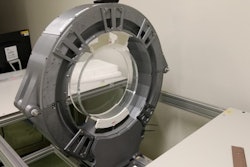The use of short-course radiotherapy for prostate cancer treatment has increased since 2004 -- a trend that appears to be cost-effective and more convenient for patients, a study published October 5 in JAMA Oncology has found.
But despite these benefits, the adoption of shorter radiotherapy protocols has not been consistent, in part due to inadequate reimbursement, wrote a team led by James Yu, MD, of St. Francis Hospital in Hartford, CT.
"[Hypofractionated] radiotherapy, especially ultrahypofractionation, is often more resource intensive and may require acquisition of high-cost technology," the group noted. "[Unfortunately,] longer courses of radiotherapy are reimbursed at higher rates than shorter courses."
Modern radiotherapy has shown high effectiveness and minimal impact on patients' quality of life, the investigators wrote. But it often presents a logistical burden for patients, as it can play out over two months. That's why shorter treatment protocols show promise for better patient care.
Yu and colleagues assessed current practice patterns of external beam radiotherapy for prostate cancer in the U.S. via a study that consisted of data taken from the National Cancer Database for 313,062 patients with localized prostate cancer. Patients were included if they had a diagnosis of localized disease between 2004 and 2020 and underwent external beam radiotherapy.
Therapy protocols were categorized in the following manner:
- Conventional fractionation (31 to 50 fractions delivered over 9 weeks)
- Moderate hypofractionation (20 to 30 fractions delivered over 4 to 6 weeks)
- Ultrahypofractionation (7 or fewer fractions delivered over 1 to 2 weeks)
The authors found the following:
| Changes in radiotherapy protocols, 2004 to 2020 | |||
|---|---|---|---|
| Type of fractionation |
2004 |
2020 |
p-value |
| Conventional |
76% |
36.6% |
< 0.001 |
| Moderate |
22% |
45% |
< 0.001 |
| Ultrashort |
2% |
18.3% |
< 0.001 |
"By 2020, the most common radiation therapy schedule was ultrahypofractionation for patients in the low-risk group and moderate hypofractionation for patients in the intermediate-risk group," the investigators reported.
What factors contributed to a trend toward the use of short radiation therapy protocols? Yu and colleagues found that treatment at a community cancer program compared to an academic or research program increased a person's odds of undergoing short radiotherapy (odds ratio [OR] 0.54, with 1 as reference); having Medicaid insurance rather than Medicare (OR, 1.49); being Black compared to being White (OR, 0.90); and having a higher median income compared to a lower one (OR, 1.28).
The shift toward shorter radiotherapy for prostate cancer underscores the need to revamp reimbursement models, since inadequate reimbursement can impede patient access, according to the authors.
"Realignment of value-based models to appropriately increase reimbursement for hypofractionation may reduce barriers to nationwide adoption and may ensure access to this treatment for underserved communities," they concluded.
The complete study can be found here.



















